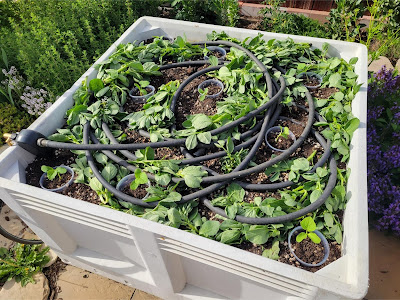Back in 2022 (https://scientificgardener.blogspot.com/2023/03/the-red-sapped-ayra-from-rajasthan.html) I grew the Ayra cucumber, an Indian variety from Rajasthan, in the raised bed garden. While it did very well and had some beautiful coloring, I seemed to have left the fruit out for too long in the heat. Subsequently, the fruit did not produce the most high-quality seeds. They were both smaller than the original and had worse germination. As a result, only a few years later, I felt the need to try growing out the Rajasthan Ayra again.
















This year, it seems like
they were once again hit with something. It looked very similar to
spider mites. Whatever the case may be, the life of the fruit was cut
short. Fortunately, the fruit did produce high-quality seed, though once
again small.


The seedlings were
transplanted in late April and were ready to harvest for seed by the end
of June. One thing that I really like about this melon variety is the
beautiful color near the end of the season.